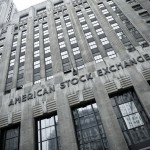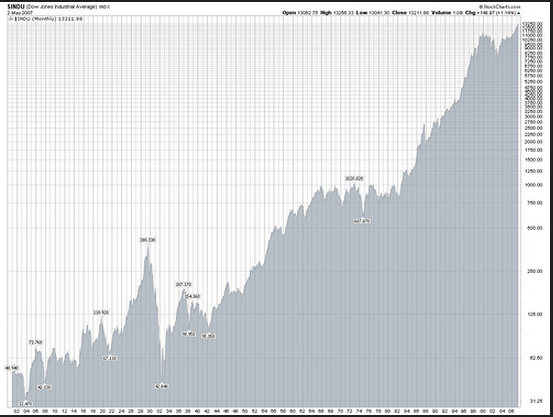
A "Log" chart of the Dow Jones Industrial Average into the first half of 2007... before the "Financial Crisis" reared its ugly head.
On March 19th, when you wake up, wander over to your computer screen, and call up the trading program of your favorite stock broker, you should keep in mind that you will be seeing a “new thing” when you look at the price of, or chart from, the Dow Jones Industrial Index (DJI). The DJI will no longer include long-time U.S. business icon, AT&T (T)! In addition, DJI component Visa (V) will exert much less impact on the daily price movement of the DJI than it has since its addition to the index in September of 2013. However, the “hot topic” regarding this “new” DJI has been the addition (finally) of the U.S.’s largest, best known, most talked about corporation: Apple, Inc. (AAPL).
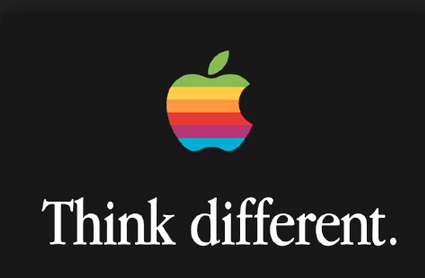 Before we jump into the details surrounding this change, let me comply with reader requests for more investor quizzes! Do your best to answer these DJI-related questions:
Before we jump into the details surrounding this change, let me comply with reader requests for more investor quizzes! Do your best to answer these DJI-related questions:
1) The DJI has always included thirty stocks? ___ True ___ False
2) Who created the DJI: a) Warren Buffett; b) D. Jones[1]; c) Tony Dow and Tom Jones; d) Charles Dow.
3) What was the original name of the iconic company, AT&T?
4) How many years has AT&T been a member of the DJI?
5) What methodology is used to determine the daily price of the DJI: a) Market Cap Weighted; b) Equal Weighting; c) Quality Weighting; d) Price Weighted; e) Jim Cramer calculates it.
6) Of the companies originally in the DJI, what is the name of the sole remaining “charter” company?
7) Which judge oversaw the landmark court case that broke up the “Ma Bell” telephone system?
[The ANSWERS appear in the APPENDIX]
Yes… on Thursday, March 19th, the Dow Jones Industrial Average will awaken at the opening bell in slightly new form! The main thing that the average American is most likely to know about this latest change in our oldest equity index is that the U.S.’s biggest, and most discussed company – Apple Inc. (AAPL) – will (finally) be added to the Index! There is no denying the significance of that change. Critics of the DJI have been clamoring for its inclusion for years, so the addition of AAPL now should be no surprise!
However, focusing solely on the impact of AAPL within the DJI would lead one to miss many other interesting and significant dimensions of this move. Below I will summarize for you the aspects of this change that I find most interesting. But let me first emphasize to you that the indexing methodology used for the DJI drives almost every aspect of its daily administration… as well as the occasional adjustment of its component stocks. The DJI is a “Price-Weighted” index.[2]
From Investopedia.com:
“Definition of “Price-Weighted Index”:
“A stock index in which each stock influences the index in proportion to its price per share. The value of the index is generated by adding the prices of each of the stocks in the index and dividing them by the total number of stocks. Stocks with a higher price will be given more weight and, therefore, will have a greater influence over the performance of the index.”
Example:
Assume that an index contains only two stocks, one priced at $1 and one priced at $10. The $10 stock is weighted nine times higher than the $1 stock. Overall, this means that this index is composed of 90% of the $10 stocks and 10% of the $1 stock.
As an obvious consequence, daily changes in the price of the $1 will be insignificant relative to changes in the price of the $10 stock!
The “Price-Weighted” methodology made it quite impractical for the folks who administer the DJI to add AAPL until after its 7-for-1 stock split in June of 2014. But even that big stock split was sufficient (in and of itself) to enable the index change to be made. Other factors needed to be taken into consideration because the index administrators strive to maintain some reasonable degree of sector balance within the index. That is where Visa Inc. (V) comes into the picture.
V became a part of the DJI in September of 2013, at the same time that Goldman Sachs (GS)
and Nike Inc. (NKE) were added.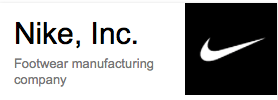
The three stocks that were dropped from the DJI to make room for these new additions were:
Bank of America (BAC),
Alcoa (AA), and
Hewlett Packard (HPQ).
Before V was added, it’s price sat in the mid $170/share range. Since the start of 2014, V has been the top-performing component within the DJI… generating an almost 20% appreciation in price, while the DJI moved up just over 8%.
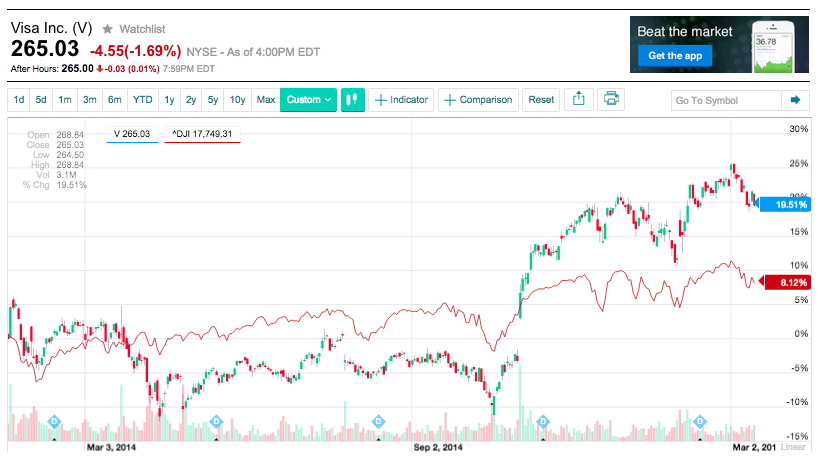
Once V (the candlestick line) gapped up, it developed sufficient momentum to far outperform the Dow Jones Index (red) between the start of 2014 and today.
Perched as it now is in the (relative) stratosphere (in excess of $250/share) the V board of directors announced a four-for-one stock split[3] that will take place on March 19th!!
“What does that have to do with AAPL?” you might well ask!
“Everything!” is the answer!
Within the DJI, V is classified as an “Information Technology” stock… as is (of course) AAPL. Therefore, as long as V sat at over $250 (the highest-priced DJI stock), adding AAPL was problematic.
However, at a “post split” price of under $70/share… sector balance in this price-weighted index was dramatically altered. That removed the “sector balance” impediment related to AAPL’s addition!
Simultaneously, the DJI folks discerned that the index was over-weighted with Telecommunications stocks – making either T or Verizon Communications Inc. (VZ) expendable. They decided to keep the stock with the larger capitalization and drop T from the index.
Here are the public comments from David M. Blitzer, Managing Director and Chairman of the Index Committee at S&P Dow Jones Indices, when the newest index changes were announced:
“As the largest corporation in the world and a leader in technology, Apple is the clear choice for the Dow Jones Industrial Average, the most recognized stock market measure.
“The DJIA is price weighted so extremely high stock prices tend to distort the index while very low stock prices have little impact. The timing of Apple’s addition to the DJIA hinged on two stock splits: Apple’s 7:1 last June and Visa’s 4:1 on March 19th this year. Apple’s split brought the stock price down closer to the median price in the DJIA. The Visa split will reduce the technology weight in the DJIA and make room for Apple. Among the current DJIA constituents, AT&T has one of the lowest prices. Moreover, the DJIA is over-weighted in telecommunications and AT&T and Verizon are quite similar, though AT&T has a smaller market capitalization.”
How does this change the investment characteristics of the DJI?:
1) The weight of V in the index will shrink from being the current #1 to sitting at #21… reducing its “weighting percentage” from 9.7% to around 2.5%.
2) GS will rise to #1 in the “weighting” category – at a “weighting percentage of about 7%.
3) The others in the “Top Five Weightings” category will be (in descending order):
3M Company (MMM)
International Business Machines (IBM)
Boeing Corporation (BA)
Apple Inc. (AAPL) at #5!
Note the fact that the largest U.S. company (by market cap) is only fifth in weighting within the DJI. That speaks volumes regarding the vast difference between “Market Weighted” and “Price-Weighted” indices!
4) Another quirk of this “Price-Weighted” methodology is:
As of the market open on March 19th, the DJI will include six “Information Technology”[4] stocks (AAPL, Microsoft (MSFT), Intel (INTC), IBM, Cisco Systems (CSCO), and V)…
And yet (despite that) the “Weight” of the IT Sector within the DJI will fall by about 2% (see the proforma slide from the S&P Dow Jones Indices folks).
 5) In addition, note that the Telecommunications Services sector will fall in weight from almost 3% to under 2%!
5) In addition, note that the Telecommunications Services sector will fall in weight from almost 3% to under 2%!
5) There will be a slight change in yield (all DJI stocks pay a dividend) from 2.29% to 2.33%.
INVESTOR TAKEAWAY:
Let’s face it, folks. This change is not one that carries great significance for the average trader, since the evolution of investing has witnessed the S&P 500 Index and NASDAQ Index command a much higher slice of total U.S. Equity trading volume and asset size.
Take a moment to absorb these data points from the S&P Dow Jones website:
Assets benchmarked to the S&P 500 Index: >$7.0 Trillion
Amount of above assets invested directly in the Index:
$ 1.9 Trillion
Assets directly indexed to the DJI (end of 2013): $ 32.8 Billion[5]
Yes, the DJI is one of the most famous and widely known stock indexes in history (it is well-branded). It is of great historical importance! This addition of AAPL is therefore significant as another milestone for the iconic company created by the legendary Steve Jobs. But practically speaking, it is no “earth shaker”.[6]
As Andy Hargreaves (who is an analyst at Pacific Crest Securities LLC and covers AAPL) has opined: “It’s not going to change anything. I couldn’t tell you the last time I thought about the Dow Jones Industrial Average and what it means for its constituent stocks. It has a kind of social significance, meaning the companies in it are old, and that’s the whole idea.”
That being said, if one takes a look at the “Summary” data on T and AAPL:
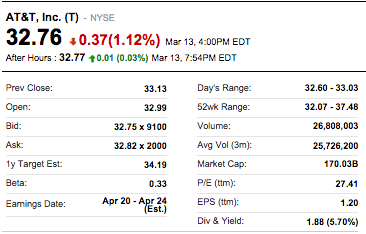
 it doesn’t take a Wall Street Guru to intuit that the DJI should “move” a bit more after the replacement of T by AAPL. Just look, for example, at the relative “Beta” metric[7] for each stock:
it doesn’t take a Wall Street Guru to intuit that the DJI should “move” a bit more after the replacement of T by AAPL. Just look, for example, at the relative “Beta” metric[7] for each stock:
T Beta: 0.33
AAPL Beta: 0.96
Therefore if you like “movement”, the DJI should indeed offer more of it following the market open on March 19th!
If you are of a mind to trade the DJI… the most liquid ETF based upon that index is the:
SPDR Dow Jones Industrial Average ETF (DIA)
When you have a bearish bent, you might consider:
ProShares UltraShort Dow30 ETF (DXD)
And when you are quite bullish, you could use:
ProShares Ultra Dow 30 ETF (DDM)
Note that some of the funds that sound like a DJI ETF actually incorporate a much broader set of “Dow” stocks… not just the 30 “Industrials”. An example of such a fund would be the: iShares Dow Jones U.S. ETF (IYY). This fact in no way makes IYY a poor investment! I merely suggest to you that you always look beyond the title of an ETF to the “fine print”.
Finally, allow me to suggest to you that there is no reason to assume that the fact that T has been dropped from the index dooms it to poor performance doing forward! After all, being in the DJI certainly did not garner it extra credit during 2014! It was one of the poorest performers within the Dow last year – falling 4.5%!! The fact is that some stocks have become “rejuvenated” after being dropped from the DJI!
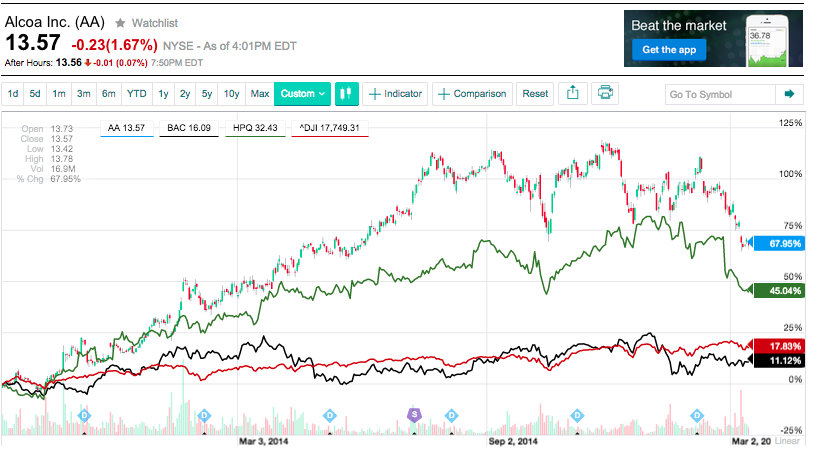
Here is a graph from September 2013 to the present. The DJI performance line is in red. As you can see, among the stocks dropped from the DJI then, only BAC failed to outperform the DJI since they were dropped. As you can see, AA has returned almost 68%. HPQ has returned 45%. While BAC just can't seem to get out of its own way!
DISCLOSURE:
The author currently owns DIA and DIAZ (an options writing closed-end fund based upon the DJI). He also owns AAPL and has owned T.
Nothing in this article is intended as a recommendation to buy or sell anything. Always consult with your financial advisor regarding changes in your portfolio – either subtractions or additions.
APPENDIX: (Quiz Answers)
QUESTION 1) The DJI has always included thirty stocks? FALSE
The original Dow Jones Industrial Average, introduced in 1896, originally included just 12 companies. In 1916 (when American Telephone and Telegraph was added) it was enlarged to 20 stocks). It reached its full complement of 30 stocks in 1928 (just before the “Great Crash”).
QUESTION 2) Who created the DJI: a) Warren Buffett; b) D. Jones[8]; c) Tony Dow and Tom Jones; d) Charles Dow.
CHARLES DOW, who was the co-founder of Dow Jones & Co. (publisher of the Wall Street Journal).
QUESTION 3) What was the original name of the iconic company, AT&T?
American Telephone and Telegraph Company
QUESTION 4) How many years has AT&T been a member of the DJI?
This is a “trick” question. Here is a very windy, but comprehensive answer. American Telephone and Telegraph (nicknamed “Ma Bell”) was the epitome of a “monopoly” within the “telephone space” for decades…. and first made its appearance in the DJI on October 4, 1916. 
It dominated the space until a court ruling forced it to break up into seven regional “Baby Bells” in 1982 (Ameritech, Bell Atlantic, BellSouth, NYNEX, Pacific Telesis, Southwestern Bell, and US West… they were all added to the S&P 500). The parent company (much smaller) continued on as a corporation – changing its name to AT&T in April of 1994.
In November of 1999, a former “Baby Bell”… Southwestern Bell… which had been renamed SBC Communications by that time… was added to the DJI.
Five years later the DJI kicked AT&T out of the Dow… after serving 87.5 years as part of the Index!
Then within a year and a half, SBC Communications absorbed AT&T… and renamed the new combined entity AT&T… restoring the AT&T name to the DJI. So AT&T has been a part of the DJI for almost another 9.5 years!
So the literal… but obscure… answer to the question is “approximately 97 years.”
As an aside, Verizon Communications[9] (a merger in 2000 of Bell Atlantic and GTE) was added to the DJI on April of 2004… and will remain the only telephone name in the DJI following AT&T’s exit.
QUESTION 5) What methodology is used to determine the daily price of the DJI: a) Market Cap Weighted; b) Equal Weighting; c) Quality Weighting; d) Price Weighted; e) Jim Cramer calculates it.
Price weighting means that the DJI is calculated like no other Index… being inordinately impacted by component stocks with the highest current stock price. That is why the DJI could not add AAPL before its 7-for-1 split. At $700/share, AAPL would have exerted totally dysfunctional impact on the daily price changes in the DJI.
QUESTION 6) Of the companies originally in the DJI, what is the name of the sole remaining “charter” company?
General Electric Company (GE)
QUESTION 7) Which judge oversaw the landmark court case that broke up the “Ma Bell” telephone system?
Federal Judge Harold Herman Greene of the U.S. District Court for the District of Columbia was the presiding judge. From Wikipedia.com:
“Judge Greene presided over United States vs. AT&T, the antitrust suit that broke up the AT&T vertical market monopoly on the telecommunications industry in the United States. The case… resulted in the 1982 consent decree between AT&T and the Federal Trade Commission. The consent decree resulted in AT&T's spin off of the seven Regional Bell Operating Companies (RBOCs). The conclusion of the case freed AT&T to enter the computer industry, from which it had previously been barred.”[10]
[1] Formerly of the Monkees
[2] The S&P 500 Index and NASDAQ Index are both Market Capitalization Weighted Indices. “The value of the Index equals the aggregate value of the Index share weights, also known as the Index Shares, of each of the Index Securities multiplied by each such security’s Last Sale Price, and divided by the divisor of the Index. The divisor serves the purpose of scaling such aggregate value to a lower order of magnitude which is more desirable for reporting purposes.
[3] There has never before been a 4-for-1 stock split for a stock that was (at the time of the split) a component of the DJI!
[4] I was caught very much off guard when I was reminded that “Information Technology” was not added to the DJI until 1999—when an investment tectonic shift occurred with the addition of MSFT and INTC to the DJI! That index change was described as an acknowledgement of the “New Economy”. This was a significant shift by the staid, history-conscious DJI folks! Of course, their timing could have been much better – coming as it did on the brink of the huge “Dot.com” crash!
[5] Yes… Billion with a “B”… according to S&P’s Dave Guardino
[6] However, all of that being said, I confess that I still prefer to gauge daily market action on reports of what the Dow Jones Industrial Average is doing… and that is for one reason, and one reason only! I grew up with it… and for reasons I can’t explain, it is easier for me to integrate into my market outlook! So sure, call me an “old codger”. It is what it is.
[7] From Wikipedia.com: “the beta (β) of an investment is a measure of the risk arising from exposure to general market movements as opposed to idiosyncratic factors. The market portfolio of all investable assets has a beta of exactly ‘1’.” Author comment: Therefore a stock with a “Beta” below one bears slightly less risk than the market as a whole. Stock with a “Beta” higher than one holds higher risk than the general market. Tesla (TSLA) has a “Beta” of 1.47… that is a great illustration of a higher risk stock.
[8] Formerly of the Monkees
[9] The name was chosen as a combination of “veritas” (truth) and “horizon”.
[10] And we have since seen how unsuccessful they were in that effort.
Related Posts
Also on Market Tamer…
Follow Us on Facebook




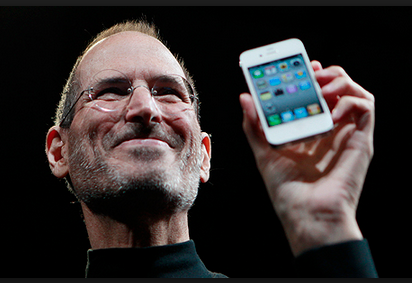

 Why Redwire Stock Looks Red Hot Today, and RTX and AeroVironment Are Rising
Why Redwire Stock Looks Red Hot Today, and RTX and AeroVironment Are Rising

